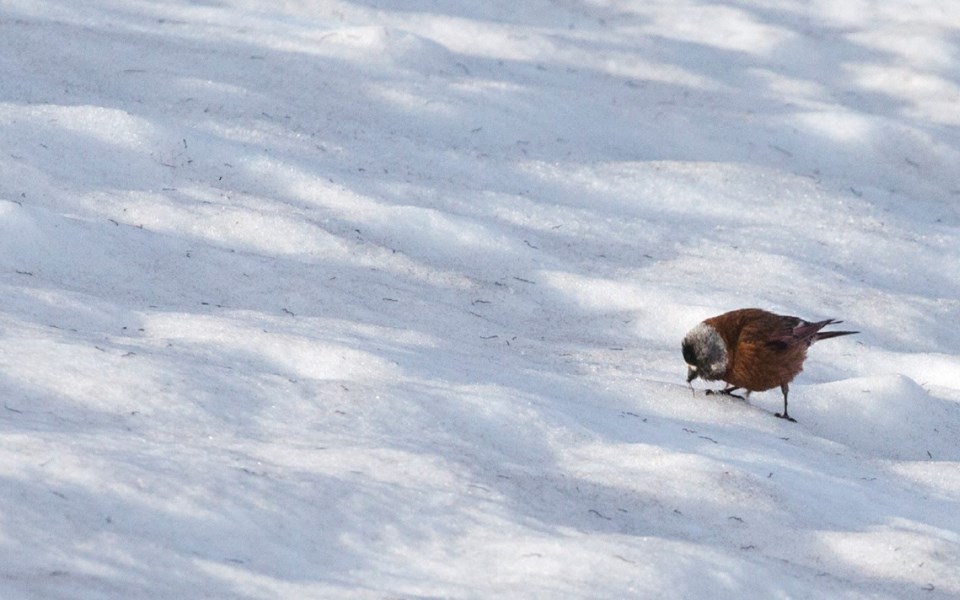While most people associate worms with the earthworms found in backyard gardens, the animal's distant cousin can also thrive in much cooler environments.
Ice worms can be found on glaciers from Oregon to Alaska—but the species really thrives on the coastal glaciers of British Columbia.
The relatively warm temperatures and large snowfall (which can provide insulation) is thought to help them survive winter. "It's kind of funny because they are an ice worm, but they are not actually that cold tolerant," explained Scott Hotaling, a postdoctoral researcher at Washington State University.
Given the large distances that separate colonies—and the animal's profound lack of mobility—one might expect disparate colonies to be genetically isolated, that worms living on a glacier near Whistler would be far different (genetically speaking) than those living in Oregon.
Yet over the years, scientists have noticed a curious pattern: that ice worms with large distances separating them can sometimes be genetically similar.
"The question is how are ice worms so closely related across such a huge distance when they can't move around?" explained Hotaling.
He believes that migrating birds likely transport the worms, inadvertently, from glacier to glacier.
It's the "only theory we've come up with that makes any sense," said Hotaling, who recently, along with a team of researchers, published a study on the subject in prestigious U.K. journal, Proceedings of the Royal Society (Biological Sciences).
Hotaling noted that the ice worms can be numerous on certain glaciers, providing a great source of food for certain birds, such as the gray crowned rosy finch, which nests in the high alpine.
Just last week, he watched a half dozen of the birds snack on ice worms on an alpine glacier.
During their research, Hotaling's team found clear genetic evidence for recent breeding between worms from an Alaskan glacier and worms from a Vancouver Island glacier.
Hotaling theorized that this is an example of birds moving ice worms relatively recently, probably within the last 100 years.
"We think that that process of these rare migration events from southern Alaska is what's maintaining that genetic, closer-than expected relationships between those populations," he said.
Hotaling's research has caught the attention of some prominent scientists.
"The whole question of the biogeography of ice worms is really curious," said David Hik, a professor of terrestrial ecology at Simon Fraser University who co-teaches Mountains 101, the world's most popular science-related Massive Open Online Course.
"How does something a centimetre long and a millimetre wide disperse over 2,500 kilometres along those temperate glaciers along the Pacific coast of North America?"
Like Hotaling, Hik was stuck by the research that shows the unexpected, geographically implausible relationship between worms in Alaska and Vancouver Island. It's "pretty weird when you think about it," he said, noting the vast distance that separates the areas.
Hik said Hotaling's theory about how the ice worms travel—by bird—is plausible.
A rosy finch might inadvertently transport the cocoon of an ice worm during its fall migration, he explained. Ice worms are certainly "not going to survive being eaten by a rosy finch," said Hik.
For both scientists, the research underlines the importance of understanding and appreciating our alpine environments, which are in a state of rapid transition as global warming takes its toll.
"There is this whole ecosystem that stands to be greatly altered, especially in the lower latitudes, like in Washington state and British Columbia, where these high elevation glaciers are receding more rapidly than basically anywhere else in the world," said Hotaling.




